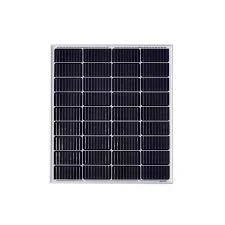Determining Dimensions for Solar Panel Height and Width Installation Guidelines
Understanding Solar Panel Height and Width Key Considerations for Optimal Installation
As the world increasingly turns towards renewable energy, solar panels have gained prominence as a sustainable solution for power generation. When considering the installation of solar panels, one critical factor that often gets overlooked is the height and width of these panels. Understanding the dimensions of solar panels plays a crucial role in ensuring efficient energy absorption, optimal placement, and, ultimately, the effectiveness of your solar energy system. In this article, we explore the implications of solar panel height and width and provide guidance on how to choose the right dimensions for your needs.
The Standard Dimensions of Solar Panels
Most solar panels have standardized dimensions, commonly ranging from 1.6 to 2 meters in height and 1 meter in width. These measurements can vary slightly depending on the manufacturer and technology used. The typical solar panel is about 1.65 meters long and 1 meter wide, with a thickness ranging from 30 to 40 millimeters. Understanding these standards can be beneficial when planning your solar panel installation.
Why Height and Width Matter
1. Energy Efficiency The size of solar panels directly impacts their power output. Larger panels can capture more sunlight, which is crucial for areas that experience limited sunlight. However, height and width should be balanced against available roof space. Knowing your roof's dimensions can help you select the number and size of panels needed to meet your energy demands without overcrowding your space.
2. Installation Space The height and width of solar panels determine how many units can fit onto a rooftop or ground area. If the panels are too large, they might not fit in the available space, making it essential to measure your intended installation area beforehand.
3. Aesthetic Appeal The dimensions of solar panels can affect the overall look of your property. Larger panels can be more efficient but might overpower architectural designs. Conversely, smaller panels can fit into tighter spaces but may require more units to achieve the same energy output. Home and business owners should consider how the dimensions will affect the aesthetic harmony of their buildings.
4. Regulatory Compliance Local regulations regarding solar panel installations can vary widely and may dictate specific height and width requirements to ensure safety and accessibility. Before proceeding with installation, it is important to check with local authorities to ensure your chosen panel size complies with regulations.
solar panel height and width

5. Wind and Weather Resistance In regions with high winds or severe weather conditions, the height and width of solar panels can significantly influence their stability and effectiveness. Larger panels may provide greater resistance against elements but could also increase the risk of damage from severe storms. Therefore, investing in durable materials and installation techniques is crucial, especially in vulnerable locations.
Choosing the Right Size for Your Project
To choose the right height and width for solar panels, consider the following
- Assess Your Energy Needs Determine how much energy you require by reviewing past electrical bills or using solar calculators available online.
- Evaluate Available Space Measure your roof or ground area to understand how much space you can allocate for solar panels. Consider obstructions such as chimneys and trees that may block sunlight.
- Consult a Professional Engaging with a solar energy expert can provide valuable insights tailored to your unique situation. They can help identify the optimal panel size, quantity, and layout to maximize energy generation.
- Future Expansion If you foresee expanding your solar energy system in the future, consider investing in slightly larger panels or leaving additional space to accommodate future growth.
Conclusion
In summary, the height and width of solar panels are more than just technical specifications; they influence energy efficiency, installation logistics, aesthetic impact, regulatory compliance, and overall system longevity. As the demand for solar energy continues to rise, understanding how these dimensions affect performance is essential for making informed decisions about solar panel installations. By carefully considering your energy needs and space availability, and consulting with professionals, you can optimize your solar energy system to harness the power of the sun effectively. Ultimately, this careful planning can lead to significant cost savings and contribute to a sustainable future.
-
String Solar Inverter: The High-Efficiency Solution for Smart Solar EnergyNewsJul.14,2025
-
Revolutionizing Rooftop Energy with the Power of the Micro Solar InverterNewsJul.14,2025
-
Power Independence with Smart Off Grid Solar Inverter SolutionsNewsJul.14,2025
-
On Grid Solar Inverter: Powering the Future with Smart Grid IntegrationNewsJul.14,2025
-
Monocrystalline Solar Panels: High-Efficiency Power for the Future of Clean EnergyNewsJul.14,2025
-
Bifacial Solar Panel: A Smarter Investment for Next-Generation Energy SystemsNewsJul.14,2025







